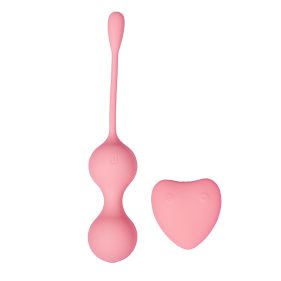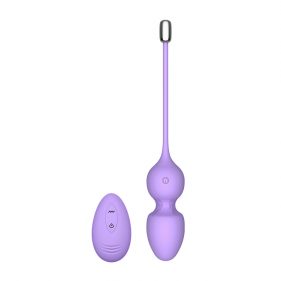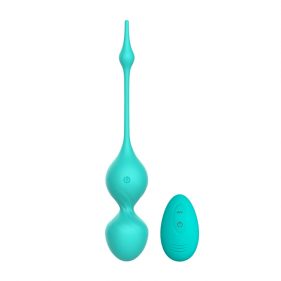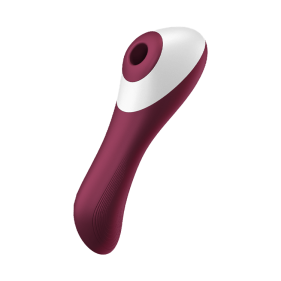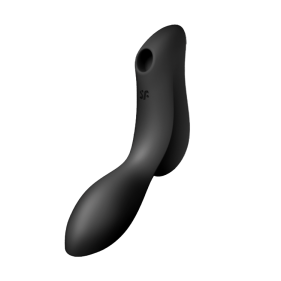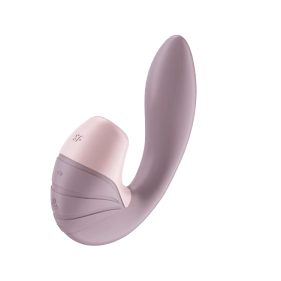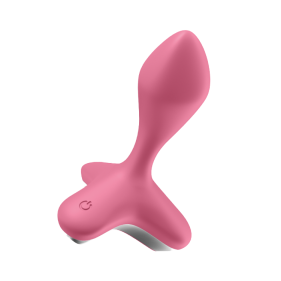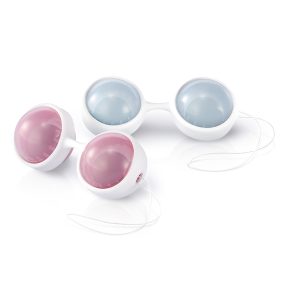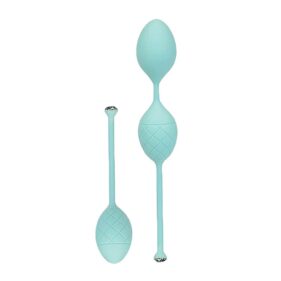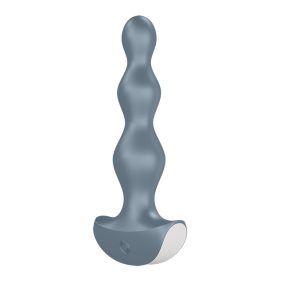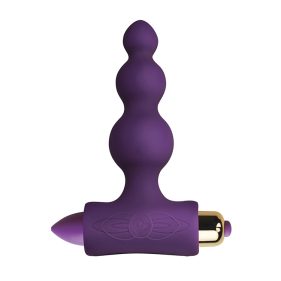
There are tons of benefits from doing Kegel exercises during your pregnancy, especially for your pelvic floor.
You may not realize it, but your pelvic floors are involved in a lot of physical activities that you do daily. It supports all of your pelvic organs above, and any movement you do takes a toll on your pelvic muscles.
Keeping this group of muscles strong is something anyone can benefit from. This is especially true for pregnant women. But how exactly do you do that? Turns out, doing Kegel exercises has a lot of benefits! And doing them during pregnancy is an easy and effective solution.
Getting To Know Your Pelvic Floor Muscles

So you’re probably wondering what these so-called pelvic floor muscles are. You see, the pelvic floor muscles are acting like a basket that holds all of your body’s pelvic organs—bladder, vagina, uterus, and rectum. As you go through your pregnancy, it’s important to strengthen this area; Afterall, these muscles are supporting your baby, if these muscles aren’t strong enough, complications may occur during and after your childbirth.
Now to locate these muscles, in case you’re unsure where to find them, here’s what you should do: The next time you find yourself peeing, stop yourself mid-way abruptly. The muscles you used to stop the flow of your stream of pee are the same muscles you’re supposed to be targeting in Kegel exercises. Just a word of precaution, go through this experiment only for once or twice since doing it more than a few times can be bad for your bladder.
The innermost abdominal muscle is called the transversus abdominis or “transverse.” It encircles your trunk like a corset. This is the muscle that involuntarily contracts when you sneeze. The action of this muscle is forward and backward. Such an act compresses the abdominal cavity. And thus, strengthening this muscle can help you push during labor.
Fo you to identify your pelvic floor muscles, follow these steps:
- Go to the bathroom
- And while urinating, stop the flow midstream and hold the flow for 3 seconds.
- Then relax and allow the urine flow to continue.
- Repeat the process. This may take a few tries but if you remain consistent, you’ll be successful with many Kegels sooner than you’d think!
However, the primary muscle of the pelvic floor lies in a figure “8” around the openings of the urethra, vagina, and rectum. Now, doing kegel exercises strengthens the pelvic floor muscles. It also helps prevent involuntary urination, which is a common problem after giving birth.
Your Pelvic Muscles’ State During Pregnancy
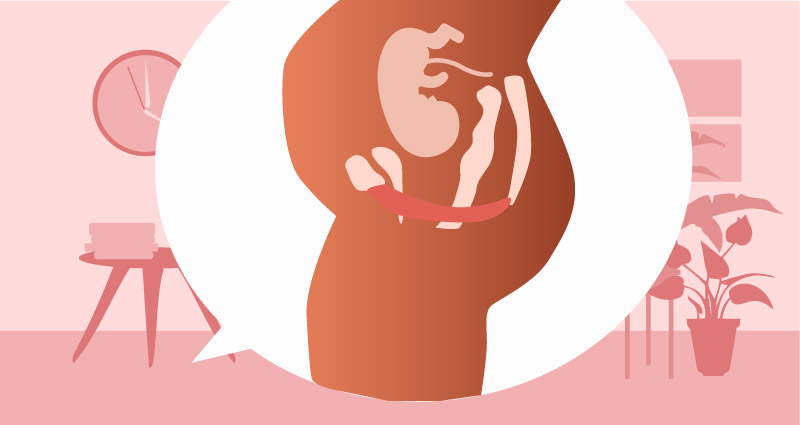
You’re carrying another human being, so it’s not surprising to know that there’s a tremendous amount of added stress on your body when you’re pregnant. As you get closer to your labor day, your pelvic muscles are working overtime to support not just your organs, but also the growing baby inside your uterus. And occasionally, they’re not really ready for such a taxing job. So you may notice that sometimes your pee leaks out when you sneeze or laugh.
It’s quite embarrassing when it happens in a public place, and you don’t really have spare undies in your bag. But the hassle doesn’t just stop there. It gets even worse once you give birth. Your pelvic muscles are even going to be further stretched once you push out your baby. And yes, your bladder control also gets a beating.
To prevent from having issues with your bladder, and other complications caused by a weakened pelvic floor, you should incorporate Kegel exercises in your daily routine. There are various benefits one can get for doing Kegel exercises during pregnancy, which we will be discussing in later sections. Now, if you’re someone who’s not familiar with the said exercise, here’s a quick refresher for you.
What are Kegel Exercises?

Let’s put it this way. Kegel exercises are the work out for your pelvic floor, which supports your pelvic organs and genitals. This includes your bladder, uterus, rectum, and small intestines. It’s a group of muscles, right? So the more you use it, the stronger it gets. In this case, the idea is that you squeeze and relax your pelvic muscles repeatedly to tone and develop them.
Now, just like other forms of exercise, you need to be consistent to get the benefits of Kegel exercises for pregnancy. You should do this daily to get the said benefits, such as stronger pelvic floor and prevention against Pelvic Prolapse.
And if you are wondering when is the best time to do Kegels during your pregnancy, the best way to know is by having your pelvic floor muscles evaluated and by taking an honest look at any symptoms that you may be experiencing and discussing that with your physician or physical therapist. If you experience any symptoms of pain, discontinue Kegels until your are further advised by your healthcare provider.
Benefits of Kegel Exercises During Pregnancy
At this point, you’re probably wondering what specific benefits that you could get from Kegel exercises during pregnancy. No worries as we’ve listed down the benefits below. Read on!
1It improves your bladder control.

It’s expected for pregnant women to have bladder leakage especially in the late stages of their pregnancy. If you’re a soon-to-be-mommy, you’re most likely annoyed with this since you tend to uncontrollably pee just by laughing, coughing, or even by doing some mild movements.
Well, the good news is that one of the benefits of Kegel exercises for pregnancy is that it helps you to improve your bladder control. By having a stronger pelvic floor, your bladder and bladder neck will have sufficient support, preventing uncontrollable peeing.
-
₱2,695.00
-
₱2,695.00
-
₱2,045.00
-
₱2,425.50
2Kegels during pregnancy reduces the risk of fecal incontinence.
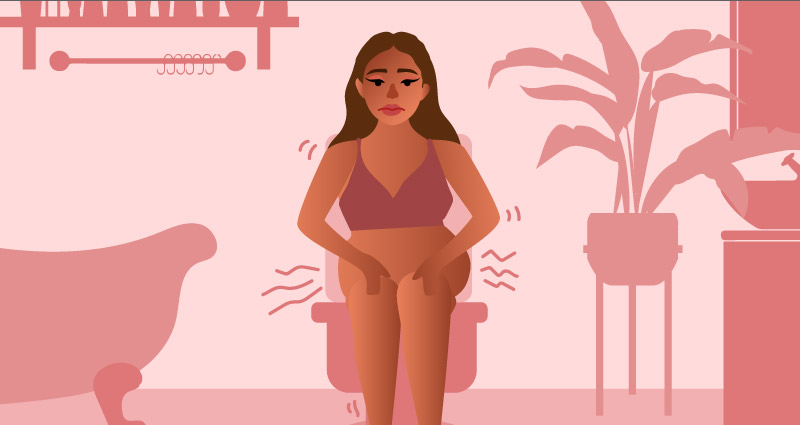
Fecal incontinence is when you experience uncontrollable bowel movement in your anal area. Having this condition is not just challenging but embarrassing as well. Now to prevent this from happening, you need to make sure that your pelvic floor is strong enough.
3It prevents you from having pelvic organ prolapse.

Another complication that one might get when having a weak pelvic floor is Pelvic Organ Prolapse. This occurs when one of your pelvic organs drops (yes your organs can be dropped or misplaced) from its normal spot in your lower belly and pushes against the walls of your vagina.
Unfortunately for our preggy readers, going through vaginal delivery can increase the risk of getting this issue. With that being said, you need to strengthen those pelvic floor muscles as soon as you can.
4It helps your body to cope with the growing weight of your baby.
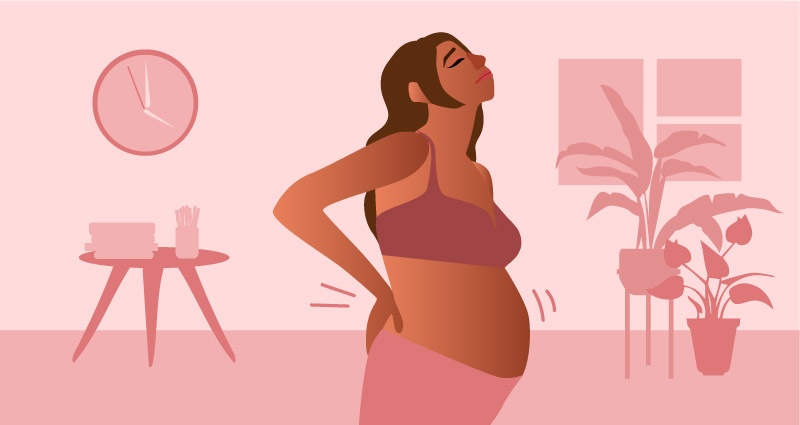
One of the benefits that you could get from Kegel exercises for pregnancy is that you’ll get more support on your womb. By training your pelvic floor and making it stronger, your body can cope with the growth of your baby. Remember, you’re dealing with about 7 pounds of additional weight here, so strengthening the part that supports your womb is a must.
5It reduces your risk of requiring episiotomy during childbirth.

An episiotomy is an incision in the area between your vagina and the anus (perineum). This is done during the delivery to enlarge the vaginal opening and ensure a smoother delivery. The incision will be then stitched closed once the childbirth process is done.
Now, if you don’t want this to occur, doing Kegel exercises during pregnancy is a must. By putting your pelvic floor in a workout, your vaginal muscles can stretch easily during the delivery.
6It makes your postpartum recovery faster and easier.

Even though the difficult part is done (aka childbirth), you still need to do your Kegel exercises, about 6 weeks after the delivery. It promotes the healing of your perineal tissues, increases urinary control, and helps your pelvic floor muscles to return into its healthy state.
-
₱3,000.00
-
₱3,395.00
-
₱2,550.00
-
₱2,800.00
7It improves your sex life.

Aside from getting excited with your newborn baby, for sure you’re excited about experiencing intimate nights again.
With that, Kegel exercises are a must. It’s because your pelvic floor muscles are responsible for the pleasurable contraction that you experience during orgasm. Now, if your pelvic floor muscles are weakened (as expected since you just gave birth), your orgasm may be less intense than what you’ve experienced before. But with toned vaginal and pelvic floor muscles through Kegel exercises, you might experience those longer and robust orgasms again in no time.
-
₱5,600.00
-
₱4,745.00
-
₱4,745.00
-
₱5,395.00
8It’s like anti-aging cream, but for vaginal muscles!

Childbirth can definitely weaken your vaginal and pelvic floor muscles, speeding up its aging process, and putting you in various health risks.
That’s why medical professionals have been suggesting women who just delivered their baby to do Kegel exercises about 6 weeks after the delivery. Giving these muscles a workout will help improve its state and can be as strong as it did before pregnancy.
9 Kegels can help make labor smoother and faster.

And if the mentioned benefits aren’t enough, Kegels can make your delivery easier. With the strengthening of the pelvic floor, Kegels can also help make labor faster and smoother. Research has also suggested that women who do pelvic floor exercises may have a slightly shorter active phase of labor than other women.
10 Kegels strengthen your pelvic floor in the long run!

Kegels are a pelvic floor muscle contraction, so like any muscle in your body, you should be attentive to strengthening them throughout your lifespan. And ultimately, performing Kegel exercises during pregnancy is an effective way to strengthen the pelvic floor muscles and help prevent incontinence, pelvic organ prolapse, and assist with labor and delivery.
Do’s & Don’ts While Doing Kegels
While Kegels can easily be a great way to strengthen your pelvic floor and enhance your well-being, there are things to avoid so you won’t struggle with them:
1Don’t overexert your energy.

This is especially since you are using energy for you and your child. After starting to do these exercises, it can be normal to feel some soreness around the pelvic area, but if you feel pain, stop and talk to your doctor.
2Don’t strain your breathing.

You would want oxygen to circulate in your body as you do Kegels. Don’t strain or hold your breath, and keep your abdominal, buttock, and thigh muscles relaxed. Keeping your muscles relaxed and practicing proper, patterned breathing will help your body loosen up to the exercises.
3Don’t improvise on your Kegel exercises if you’re not sure.

Doing these exercises regularly and exercising the right muscles are important. If you find yourself forgetting, there are apps you can download that remind you to do your Kegels and guide you through different training sessions. We recommend using the apps such as Baby2Body, Pregnancy Exercise and Workout at Home and Prenatal Yoga.
-
₱4,745.00
-
₱12,645.00
-
₱4,745.00
-
₱4,745.00
4Don’t get frustrated if you’re nowhere close to that goal when you start.

Consistency with proper exercises is key to seeing the positive effects of Kegels. Quality is much more important than doing a bunch of Kegels incorrectly. And remember, these are muscles like any other in your body. With time and consistent, mindful work, they can only get stronger.
5Don’t stick to just one workout routine if it’s getting boring, mix it up!
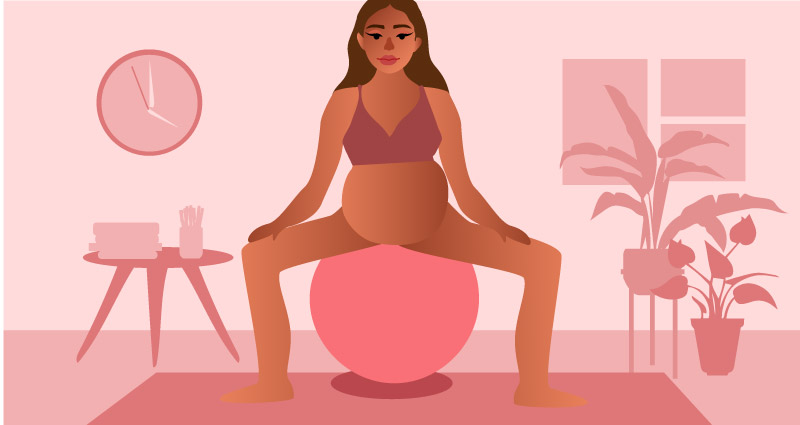
If you’re having trouble remembering to do your daily Kegels, or they just seem like a drag, there’s no better way to mix business with pleasure than performing Kegels during sex — which can double the pleasure for you and your partner. Your partner can also use his or her clean fingers to check whether you’re tightening the right muscles.
6Do increase the intensity as your muscles get stronger.
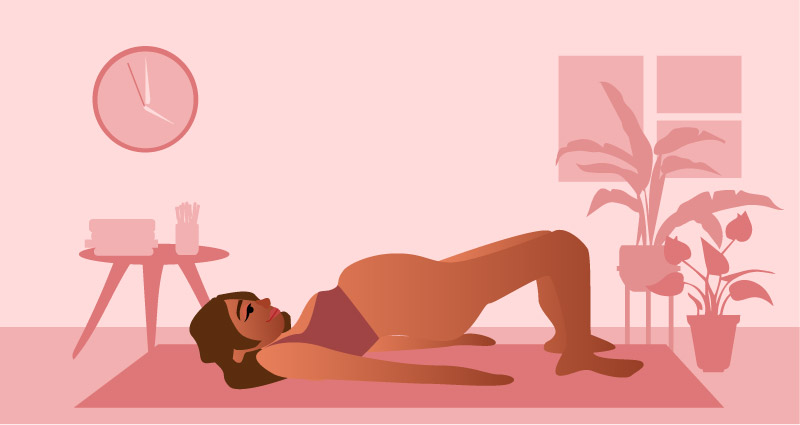
It’s best to start small and gradually increase the number of repetitions, the duration of each squeeze, and the frequency of daily practice sessions as the muscles get stronger. Remember to not overexert yourself too in the process because draining all your energy won’t make the exercise work as it should.
7Do ask your healthcare provider if Kegels are well-suited for you and your current state.

If you are pregnant or have just had a baby, it’s best to ask your provider before starting. During pregnancy, you may want to start in the second trimester, which starts at around 14 weeks pregnant. This is when many moms-to-be experience a much-needed energy boost.
After your baby is born, you may be able to start doing Kegels within a few days of an uncomplicated vaginal birth — just make sure you feel ready. If you had complications during vaginal birth or had a c-section, wait until the doctor gives you the all clear.
-
₱4,745.00
-
₱4,745.00
-
₱4,745.00
-
₱4,745.00
8Do recognize that there is no set rule on how often to do Kegels.

Some experts recommend doing Kegels at least twice a week, while others recommend doing them daily. There are many options in terms of how many Kegels to do and how often. For example, your healthcare provider may suggest doing 10 sets of Kegels three times per day; doing 50 squeezes throughout the day; or practicing twice a day before increasing to three times a day.
9Do make an effort to identify the right muscles.

In order to find the correct muscles, there are some things you can try: Imagine that you are sitting on a marble. Now, pretend you are trying to pick up the marble with your vagina, “sucking” it into your vagina. Another option is to insert a clean finger into your vagina. Squeeze your muscles as if you were holding in urine. If you feel a tightening around your finger, you’ve got the right muscles.
10Avoid using the wrong muscles when doing your Kegels.

Try not to squeeze or tighten any of the adjacent muscles, such as those in your stomach, buttocks, or legs. Doing so can interfere with the action of the pelvic muscles. Also, it can put pressure on your bladder if you’re tightening the muscles around the pelvic floor instead of the actual pelvic floor muscles.
Best Kegel and Pelvic Floor Exercises During Pregnancy

As you’ve learned about the different benefits of Kegel exercises for pregnancy, you’re probably interested in trying this one out.
Now, the beauty of Kegel and pelvic floor exercises is that you can do them practically anywhere—at home, at work, or even in the office. You can do them lying down, sitting, or standing up, as long you’re in a comfortable position. Kegel exercises will teach you how to work your muscles individually. This, in turn, helps you out during the “pushing phase” of labor. Ideally, once you master the art of relaxing and controlling your pelvic floor muscles, this will help let the baby out easier.
There are several Kegel and pelvic floor routines you can experiment with, and these exercises have their own benefits. Do these exercises at least three times a day. Perform ten repetitions of each move, and as you get used to it, upgrade it to twenty repetitions until you’re confident that you’re strong enough. Try all of them and see which one works best for you.
1Inhale, Exhale, Belly Breathing

How To: Put your hands on your belly. Sit with your legs crossed. Make sure that your lower back is supported. Keep your back and shoulders still, then slowly inhale through your nose. Expand your belly as you’re inhaling then as you exhale through your mouth, draw in your abdominals, bringing your navel toward your spine.
Benefits: This will strengthen your abs and pelvic floor muscles for an easier delivery. It will also lower your risk for involuntary urination later on post-delivery.
-
₱1,840.50
-
₱3,600.00
-
₱7,998.00
-
₱1,999.00
2 Horizontal Belly Dancing (On All Fours)
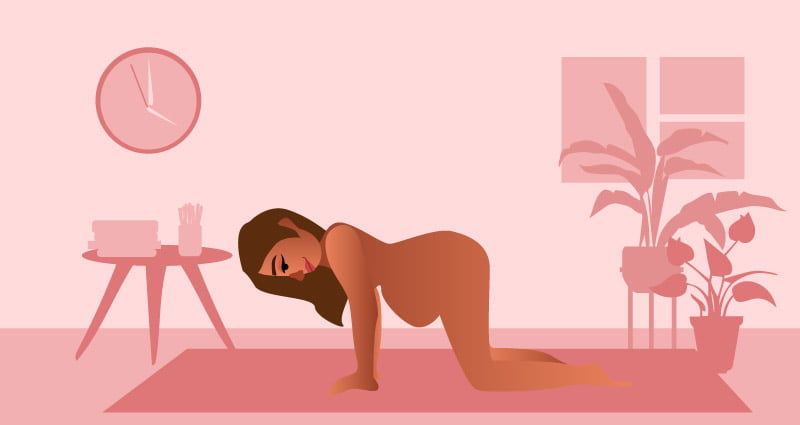
How To: Lay down a mat on the floor. Get down on your hands and knees. Your wrists should be under your shoulders, and your knees should be a hip-width apart. Keep your back straight and breathe in. Draw your abdominals up. Bring your navel toward your spine. Then, hold. Breathe normally. Tilt your pelvis under. Bring your pubic bone toward your navel. Hold again and then count to five. When you complete the final repetition, stand up by stepping one foot forward and push off your thigh with both hands.
Benefits: The benefit that you will get from this kegel exercise is the strengthening of your abdominals as well as your back and upper body, which will help you in labor.
3The Transverse Elevator
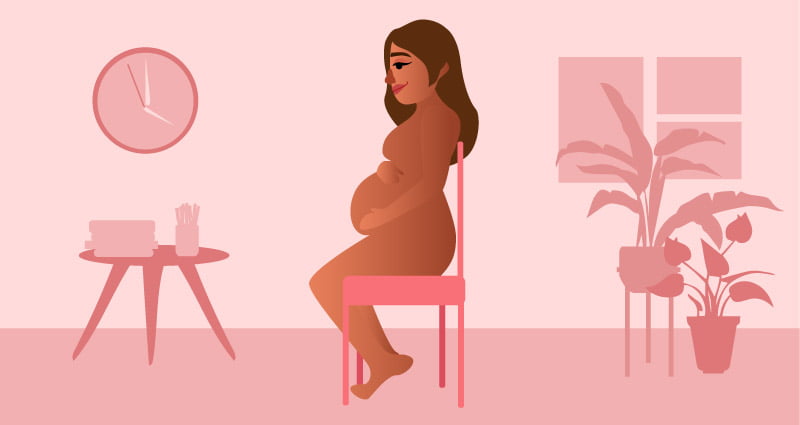
How To: Sit with your lower back supported. Put one hand on your upper belly and the other near your navel. Imagine your transverse is a horizontal elevator with six “floors.” Inhale, then exhale. Draw your abs toward your spine to the fifth floor. Hold and count out loud to 30. Do five squeezes from the fifth to the sixth floor.
Benefits: This will strengthen your abs, especially the transverse, which provides for the needed stamina when you’re pushing the baby out.
4Squat Power Duo
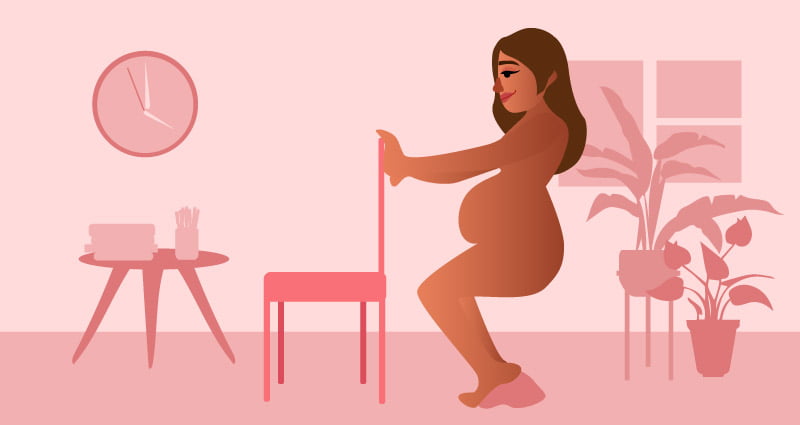
How To: Hold a fixed object, such as a pillar or a sturdy chair. Stand with your feet farther than hip-width apart. Then, lower your body into a deep squat. Keep your weight over your heels. (If your heels do not touch the floor, place a towel under them.) Then, draw your abs in as you exhale. Repeat this combo five times.
Benefits: This will strengthen your abs, legs, and pelvic floor.
-
₱4,745.00
-
₱3,395.00
-
₱1,850.00
-
₱5,795.00
5The Strong Hold

How To: Simply squeeze your pelvic floor muscles and keep that position for as long as you can. Then let go of your hold for a few seconds. Keep repeating this 10 to 20 times. Don’t worry if at first, you can only do it for 3 seconds. Gradually, you may notice that your hold gets stronger, and the time you can keep it clenched also lasts longer. As you do the Kegel exercise, your contraction may loosen, and that’s okay. Simply focus on retightening the targeted muscles. Your contraction also gets stronger over time as you keep practicing.
Benefits: As your contractions get stronger, so will your pelvic floor and the muscles around it.
Frequently Asked Questions
Now that you’ve learned about the different Kegel exercise techniques, you’re most likely ready to try the exercises yourself. But we do get that there are questions that are still lingering on your mind.
That said, we’ve answered some of the frequently asked questions about the benefits of Kegel exercises for pregnancy.
1When can I start doing Kegel exercises?

If you’re pregnant or have just given birth, the best advice we can give you is to ask your medical provider first to find out which is the safest time for you to start with Kegel exercises.
Usually, during pregnancy, you can perform Kegel exercises during the second trimester. That’s the time when moms-to-be require some exercise. Once the baby is born through uncomplicated vaginal birth, you can start with Kegel exercises in a few weeks. Otherwise, if you’ve had a C-section, you have to wait for the doctor’s go-signal.
2Is it really safe to do Kegel exercises during pregnancy?

As long as you’re doing it properly and activating the right muscles, you’ll do fine. It’s also suggested by tons of medical professionals due to the benefits that you can get from Kegel exercises during pregnancy.To ensure that you’re doing it right, here are some pointers to consider:
- If you’re doing Kegels correctly, you should feel an upward tightening sensation.
- Your thighs, buttocks, and abdomen muscles shouldn’t be moving or tightening.
- Go for a position that you’re most comfortable with.
- There shouldn’t be any pain when doing Kegel exercises. If the pain remains, you’re probably doing it wrong or experiencing a complication—consult your doctor immediately.
3Are there things to consider/notes of caution when doing Kegel exercises?

If you want to get the benefits of Kegel exercises for pregnancy, without repercussions, here are the things you should consider:
- It’s important to relax during the exercise– this will help you locate the right muscles to exercise in.
- Try not to move your leg, buttock, or abdominal muscles.
- If you took a C-section delivery, it’s best to talk to your doctor first and get their go-signal before starting Kegel exercises.
4Is it safe for pregnant women to use Kegel balls?

Yes! Using Kegel balls can strengthen the pelvic area more efficiently, helping you prepare for the delivery. As for the variation, if you haven’t tried using Kegel balls yet, go for the single ball or lighter variations.
5How long does it take before I see results?

If you’re doing it consistently, you may notice results after 2 weeks of pelvic floor training. But if you want to really reduce your complications and get the benefits of Kegel exercises for pregnancy, you need to work on at least 5-6 months.
Takeaway

Staying fit and preparing yourself for motherhood can be quite a challenge. You’re bringing a new life into this world, so you need all the help you can get. There are so many benefits to doing Kegel exercises during pregnancy. It may be just what you need to keep your physical and mental health in top shape. You can do them with 100% discreetness, and it takes very little of your time.
If you are interested in more sexual health topics, click here for more. And if you have more specific queries, you can head on and ask Dr. Sex; she’ll be more than happy to answer your questions.





